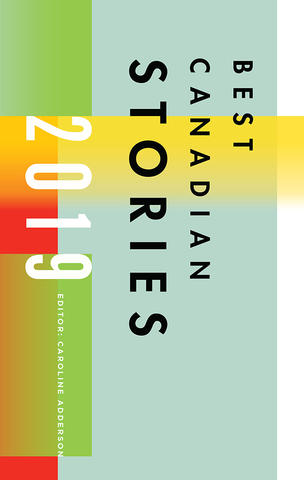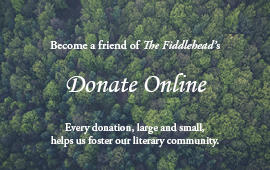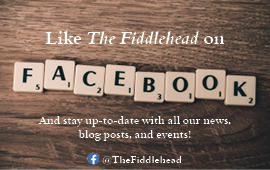
Best Canadian Stories 2019 (Biblioasis, 2019), edited by Caroline Adderson
If a person had nothing but this collection of stories from which to judge the state of fiction in Canada, they would come away believing that Canadians are delightfully chaotic and completely insane. Most fiction is comfortably familiar, allowing the reader to anticipate plot twists and be drawn through pleasant stories about family, friends and loved ones. In familiar stories, the characters are recognizable to the reader, the plots sensible and the endings climatic in a predictable way. The essence of stories does not really change and that is part of the comfort of reading, except the fiction collected by Caroline Adderson in Best Canadian Stories 2019 denies the reader the familiarity of expected endings, recognizable narrators or comfortable settings to anchor the stories. Adderson has collected the best of Canadian fiction, and the stories are extraordinary in their strangeness, inventiveness and delight.
In Adderson’s introduction, she explains her choices, even poking fun at herself in suggesting that readers may assume she was drunk when she picked the stories (1). After extensively reading all of the stories published after 2018, she picked her favourites using one strict criteria: delight. She recognizes that “delight has fallen out fashion these days,” (2) but she borrows the concept to help her choose the best of the best with the reader in mind. Fiction offers the “astonishing opportunity to enter deeply, through the medium of language, into the consciousness of another being” (2). Rather than giving us didactic morality tales, Adderson has collected works of fiction that make readers stop and think about what just happened. And then we have to read the stories again. Outside of a classroom, where do we get the opportunity to throw ourselves into a story, repeatedly, just because we can? Perhaps good stories will bounce around in our busy minds while we rush throughout our day, and we might remember an amusing anecdote or a powerful scene. These stories, once read, do not allow you to forget them; they force you to stop, take notice and, maybe, read them again—even if you do not really want to.
Take, for instance, “Alice and Charles” by Camilla Grudova. In it, the narrator describes a dystopic future where the state issues a dog to every girl for her protection. She says, “I didn’t understand why they gave us too many options: if they only provided vicious dog breeds, fewer girls would be hurt or disappear. But the state believed in giving girls the freedom to choose what type of fate they wanted, whether a miniature poodle or a great Dane” (188). But what kind of a future is it? The genders are nearly completely segregated, dog shit and fear are everywhere, and feminine hygiene products have become a luxury item. The utter brilliance of this story is that it avoids being a morality tale about either feminism (or patriarchy) run amuck; this bleak story has an ending that is so surprising that the reader is left stunned. It is a deeply chilling story about a girl, her dog and a clown.
Contrast Grudova’s story with “Pig Head” by Zalika Reid-Benta. Kara’s first visit to Jamaica is tarnished by accidentally finding a dead pig’s head in the freezer of her Auntie’s house. She is haunted by the pig’s head (and by watching her ten-year-old cousin wring a chicken’s neck in front of her) and she brings the story of the pig’s head to her classmates and friends when she goes back to Toronto (147). The fame that accompanies the ever-changing story makes Kara the classroom rock star—with all of the pitfalls associated with celebrity. This also could have been a predictable story about the clash of cultures and multiculturalism and the inherent meanness of children—except, it is more than that. Through Kara’s bigger and bigger lies, getting caught and subsequent social fall, the tone of the story remains hopeful and kind. The experience of reading Reid-Benta’s story (nearly) cleanses you of the creepy feeling from “Alice and Charles.”
Richard Van Camp’s “Young Warriors in Love” opens the collection with a young Cree boy who asks his uncle to help get the attention of his crush and have her go to the school dance with him. His uncle asks him how he knows it is love that he feels for her—the young narrator’s reply is delightfully realistic: “Because she gives me a big sweaty lip, okay?” (12) Satisfied with this explanation, the uncle leads his nephew through three ceremonies for love that are sure to help him in his quest. The story is engaging and inviting to the readers, letting them inside a house where an elder is passing down traditional stories and ceremonies, in between watching and commenting on Dances with Wolves. “Young Warriors in Love” is funny and uplifting, leaving readers smiling as they turn the page.
Delight, as a reading criteria, seems rather personal and should be hard to define, but Adderson suggests that delight itself is not an escape from reality but a “direct and more mysterious engagement with it” (3). These stories do not allow us to merely read them, but to experience them—to question them—and to dive deep, changing our ideas of what good fiction can do to us, and for us, in these troubled times. Adderson invites us into the pages of this anthology and warns us that, while we are inside, we will, at first, feel “different—sad, strange, delighted, disturbed…” but then we need to “step back out blinking in wonderment at [our] slightly larger world” (8), a world that has been changed by the brilliance of stories designed to shake loose the definition of what a good story should be.
Individually, these stories are all fine examples of what a good short story should be. Taken as a whole, this collection blows up your expectations of what writing in Canada is like. The authors of these stories are both well known and, likely, new to some readers. Lisa Moore, Mireille Silcoff, Zsuzsi Gartner, Shashi Bhat, Christy Ann Conlin, Troy Sebastian\nupquʔ ak·ǂam̓, Frankie Barnet and Cathy Stonehouse join relative newcomers Kai Conradi, Adam Dickinson, Elise Levine and Alex Pugsley. Some of the stories are funny, some are touching and some are a nightmare that you will not ever want to read again—but you will remember them all.
~Megan Kuklis
Now in its 49th year, Best Canadian Stories has long championed the short story form and highlighted the work of many writers who have gone on to shape the Canadian literary canon. Margaret Atwood, Clark Blaise, Tamas Dobozy, Mavis Gallant, Douglas Glover, Norman Levine, Rohinton Mistry, Alice Munro, Leon Rooke, Diane Schoemperlen, Kathleen Winter, and many others have appeared in its pages over the decades, making Best Canadian Stories the go-to source for what’s new in Canadian fiction writing for close to five decades. Selected by guest editor Caroline Adderson, the 2019 edition draws together both newer and established writers to shape an engaging and luminous mosaic of writing in this country today—a continuation of not only a series, but a legacy in Canadian letters.










Add new comment